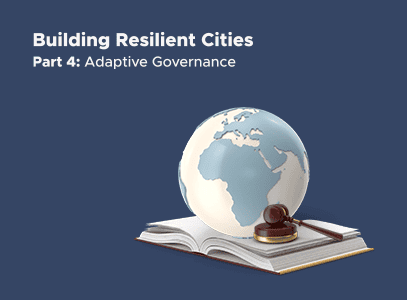The development of new cities has become prolific with several countries in Asia, the Middle East and Africa, purposefully building a plethora of new cities from the ground up, as opposed to allowing existing areas to organically grow into cities. Exemplars include Egypt’s New Administrative Capital set to replace Cairo, Malaysia’s Forest City on man-made islands, South Korea’s Songdo smart city, and Saudi Arabia’s US$500 billion zero-carbon Neom City. Closer to home, semblances of new city developments include Nkwashi, National Pension Scheme Authority’s River View Park, the Horizon Green Village and of course, the Lusaka South Multi-Facility Economic Zone envisioned to be a ‘city within a city’. Given this unprecedented scale, how concerned should we be about new city development? The answer seems obvious given at the height of the global discussion, cities are recognized as a key objective for realizing sustainable development – Goal 11 of the Sustainable Development Goals, to be precise. But is it enough to just build new cities or does their governance matter for realizing optimal development outcomes? In responding to the latter question, the concept of charter cities – new cities with new rules – comes to the fore, and their potential to spur positive development outcomes, is explored.
The rapid expansion of the global urban population gives impetus to new city developments. The United Nations estimates that the global urban population is expected to increase to 68% by 2050, which implies an additional 2.5 billion urban residents. Of these, nine in every ten new urban residents will reside in Asia and Africa. Zambia’s demographic trends mirror these global statistics. The country’s population is rapidly expanding at 2.8% per annum, with the urban population increasing at an even faster rate of 4.2%. Lusaka’s population, for instance, is projected to grow from 3.4 million in 2021, to 4.7 million in 2030. Such rapid urbanisation places untold demand on jobs, infrastructure, and basic city services such as affordable housing, transportation, energy, education, and health.
Unfortunately, the provision of public services lag demand for two main reasons – financial and technical capacity constraints faced by the public sector in adequately planning for and accommodating such rapid urban expansion. Consequently, many urban residents in Zambia dwell in informal settlements, 70% to be exact, according to UN Habitat estimates. These settlements are characterised by inadequate water, sanitation, sewerage, and drainage systems, which exacerbate the all too familiar risk of cholera. A housing deficit of 1.5 million units also implies other problems of overcrowding. In the context of economic opportunities, labour shifting out of low productivity agricultural activities typically carried out in rural areas, is not finding its way into higher productivity and higher income non-farm activities such as manufacturing in cities. Instead, much of Zambia’s labour is being absorbed into lower productivity services (often informal) or is not being absorbed at all, consequently limiting income growth and poverty reduction.
Presented with these challenges, how can we adequately address rapid urbanisation, minimize its potential downsides, ensure economic opportunities for urban residents to engage in and thus turn urbanisation into a dividend? This column examines how charter cities – ‘cities of the future’ – can help alleviate such challenges and help to kick-start sustained economic growth. By definition, a charter city is a special jurisdiction with a high degree of legal, administrative, and regulatory autonomy governed through a public private partnership between a private city developer and the host government. In practice, charter cities can be thought of as the next generation of special economic zones only bigger and with significantly more regulatory autonomy (more on this in the next article). Their modus operandi is premised on decentralisation as the mode of governance. In other words, devolving authority over regulatory domains such as business and land registration, taxes, customs and labour law (among others alluded to in Charter Cities’ Governance Handbook) as part of governance reforms aimed at improving efficiency, bolstering service delivery, and creating a conducive and enabling business environment.
With a high degree of devolved authority, charter cities can do four things: One, attract private urban developers to help finance and build new cities, thereby allowing governments to leverage private sector resources for city development, and consequently relieve financial and technical constraints faced by the public sector. Two, create a liberalized and enabling business environment that is flexible, adaptable, and quick to address red tape (i.e., a multiplicity of licenses and slow turnaround in provision of key services such as energy, water, etc.), and respond to emergent business demands. Such a business environment can act as a strong incentive for crowding-in investments needed to spur sustained economic growth, create jobs and reduce poverty, as was the case in Shenzhen, Singapore, Hong Kong, and other proto-charter cities that went from poverty to prosperity in one or two generations. Incidentally, Singapore and Hong Kong ranked in the top three of globally competitive jurisdictions in 2019. Three, generate revenue for national and local government from shared taxes and fees levied on property and economic activities in new charter cities. Four, act as experimental grounds where policies can be tested in a delimited geographic area, scaled up if proven successful, and discarded otherwise.
To sum up, charter cities are a very ambitious development model. Indeed, they are intended to be transformational. Because the urbanisation and growth challenges we face require innovative and progressive solutions, particularly if we are to meet our ambitious goal of becoming a middle-income country by 2030. And arguably, the timing couldn’t be better for Zambia. With the new Government’s renewed emphasis on decentralisation and partnerships with the private sector, charter cities align well with these policy objectives and thus could be employed to address urban growth concerns and concurrently serve as engines for Zambia’s economic development.
The author is Africa Lead for the Charter Cities Institute (CCI), email: [email protected]







